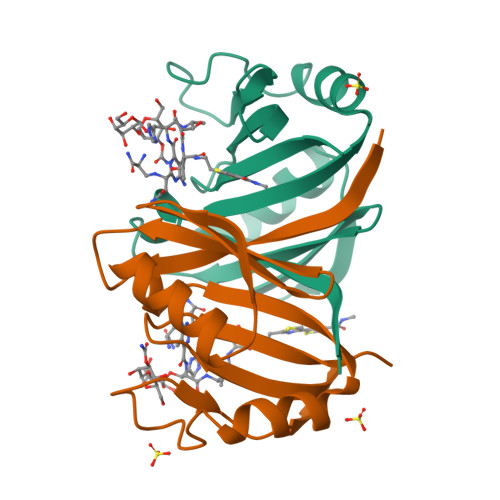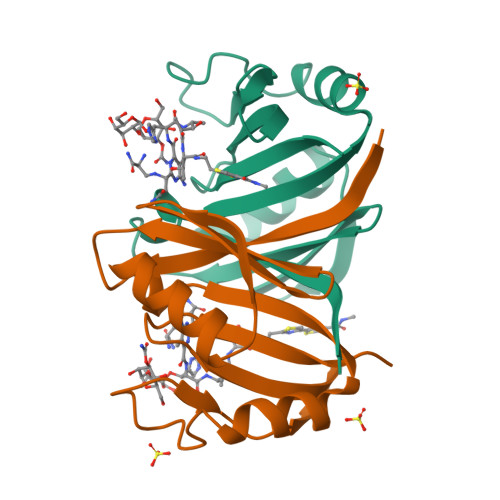Engineering a selectable marker for hyperthermophiles
Brouns, S.J.J., Wu, H., Akerboom, J., Turnbull, A.P., de Vos, W.M., van der Oost, J.(2005) J Biological Chem 280: 11422-11431
- PubMed: 15640151
- DOI: https://doi.org/10.1074/jbc.M413623200
- Primary Citation of Related Structures:
1XRK - PubMed Abstract:
Limited thermostability of antibiotic resistance markers has restricted genetic research in the field of extremely thermophilic Archaea and bacteria. In this study, we used directed evolution and selection in the thermophilic bacterium Thermus thermophilus HB27 to find thermostable variants of a bleomycin-binding protein from the mesophilic bacterium Streptoalloteichus hindustanus. In a single selection round, we identified eight clones bearing five types of double mutated genes that provided T. thermophilus transformants with bleomycin resistance at 77 degrees C, while the wild-type gene could only do so up to 65 degrees C. Only six different amino acid positions were altered, three of which were glycine residues. All variant proteins were produced in Escherichia coli and analyzed biochemically for thermal stability and functionality at high temperature. A synthetic mutant resistance gene with low GC content was designed that combined four substitutions. The encoded protein showed up to 17 degrees C increased thermostability and unfolded at 85 degrees C in the absence of bleomycin, whereas in its presence the protein unfolded at 100 degrees C. Despite these highly thermophilic properties, this mutant was still able to function normally at mesophilic temperatures in vivo. The mutant protein was co-crystallized with bleomycin, and the structure of the binary complex was determined to a resolution of 1.5 A. Detailed structural analysis revealed possible molecular mechanisms of thermostabilization and enhanced antibiotic binding, which included the introduction of an intersubunit hydrogen bond network, improved hydrophobic packing of surface indentations, reduction of loop flexibility, and alpha-helix stabilization. The potential applicability of the thermostable selection marker is discussed.
Organizational Affiliation:
Laboratory of Microbiology, Department of Agrotechnology and Food Sciences, Wageningen University, Hesselink van Suchtelenweg 4, 6703 CT Wageningen, The Netherlands. stan.brouns@wur.nl




















